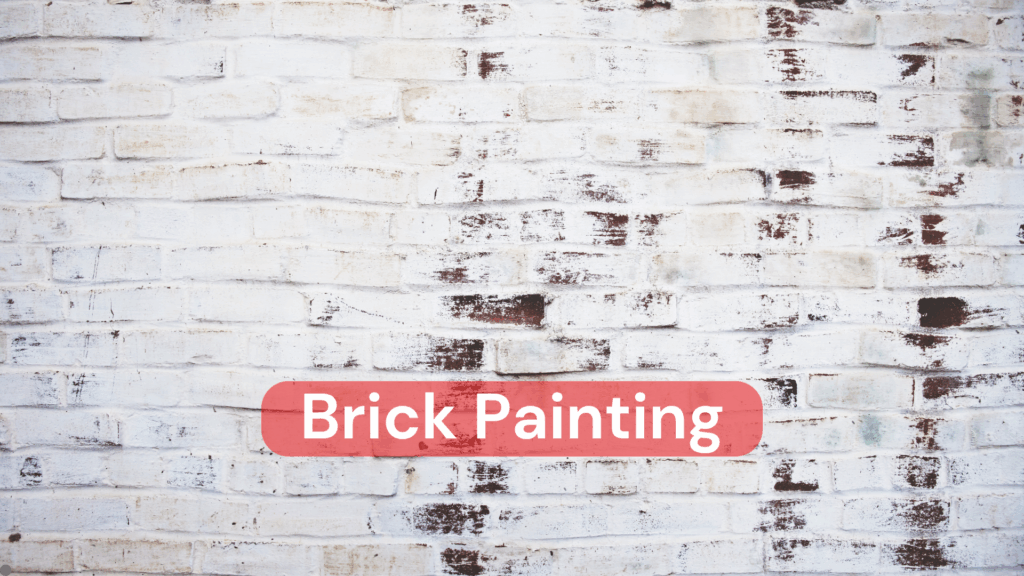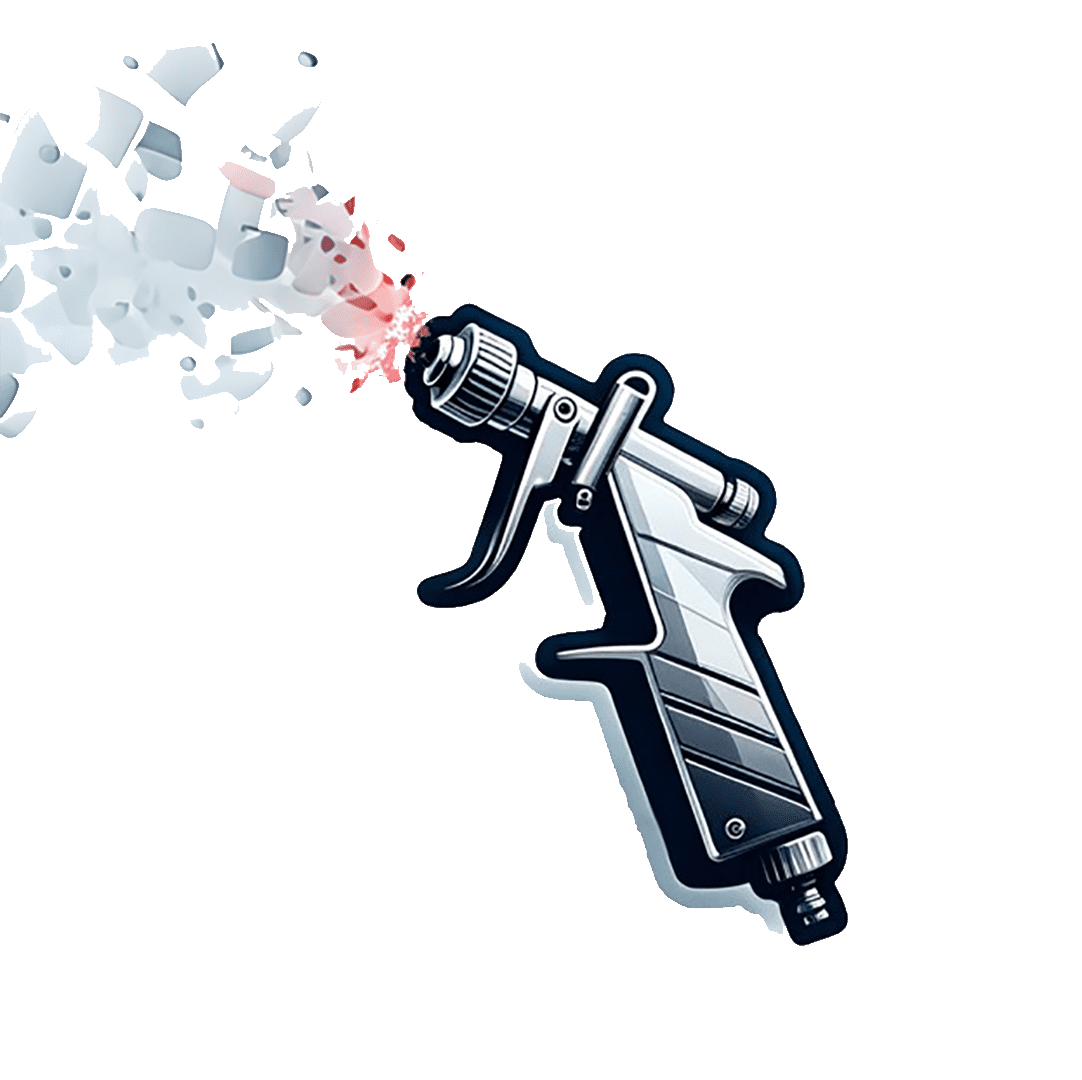This classic look isn’t for everyone – so what are the options when it comes to brick painting? Here we share the pros and cons, plus other options available.

Brick is durable, timeless, and adds character to any home. But sometimes homeowners look at their brick and think it needs a refresh. Maybe the colour feels dated. Maybe you want a cleaner, more modern look. That’s when brick painting enters the conversation.
The appeal is clear: painting brick costs up to 70% less than re-siding or replacing brick entirely. But this isn’t a simple weekend project. It’s a decision that comes with real consequences for your home’s structure, maintenance needs, and even its value. With over 25 years’ experience across Calgary, Edmonton, Kelowna, and Hamilton, Harding’s Painting helps homeowners weigh these exact pros and cons.
Table of Contents
Is Brick Painting Right for You?
Brick brings texture and warmth to a home. It’s one of those materials that ages well when left alone. But not everyone loves the look of exposed brick, especially if it’s dark, worn, or clashes with your design vision.
Homeowners consider brick painting for a few reasons. They want to lighten up a space. They’re trying to match their home’s exterior to a specific colour scheme. They’re covering up stains or damage that can’t be easily cleaned. Or they simply want something different.
Before you pick up a brush or call a contractor, ask yourself these questions: Are you prepared for ongoing maintenance? Do you understand how paint affects brick’s natural properties? Will this change increase or decrease your home’s value?
These aren’t easy questions, but they’re necessary ones.
Biggest Pros of Painting Brick Surfaces
Let’s start with the positives. Painting brick can completely transform your home’s appearance. A fresh coat of paint can make a dark, dated exterior look modern and inviting. For interiors, painting brick can lighten a room and open up design possibilities beyond traditional brick red.
The aesthetic change is immediate and dramatic. If you’re trying to improve curb appeal, painted brick can make your home stand out in the neighbourhood. It’s also more affordable than replacing brick or installing new siding.
There’s also a maintenance angle. A painted surface can be easier to clean than bare brick. Brick is porous, which means those tiny holes can trap dirt, dust, and moisture. Paint creates a smoother surface that you can wipe down more easily.
Painting with masonry paint can shield against water damage when applied correctly with the right products. Quality masonry paint designed for brick can improve the integrity of the material by protecting it from harsh weather conditions.
Potential Drawbacks of Painting Brick
Now for the hard truth. Painting brick comes with serious drawbacks that many homeowners don’t consider until it’s too late.
The biggest issue is breathability. Brick is designed to be porous. Those tiny holes allow moisture vapour to pass through in both directions. This natural breathing process is how brick stays healthy over decades. When you paint brick, you seal those pores. Moisture gets trapped inside, and over time, this causes the brick to deteriorate from within.
This isn’t a minor concern. Trapped moisture can cause significant damage, especially in climates with freeze-thaw cycles. Water expands when it freezes, and if that water is trapped behind paint, it pushes against the brick and causes cracking, spalling, and structural damage.
Once you paint brick, you’re also committing to ongoing maintenance. Paint chips, peels, and fades. You’ll need to repaint every few years to keep it looking good. And if moisture gets trapped behind the paint, you’ll see bubbling and flaking much sooner than expected.
Then there’s the resale value question. Painting brick doesn’t typically increase home value. In fact, it can be a red flag for buyers who prefer natural brick. Real estate professionals often note that natural brick is preferred, and brick homes typically appreciate more than homes made of other materials.
The decision to paint brick is essentially permanent. Removing paint from brick is expensive, labour-intensive, and can damage the brick in the process. You’re making a choice that future owners will have to live with.
Exterior vs. Interior Considerations
The stakes are different depending on where you’re painting, and your local climate matters. Calgary’s harsh freeze-thaw cycles make moisture trapping particularly destructive, while Kelowna’s dry summers and wet winters create different challenges. Edmonton faces similar freeze-thaw issues, and Hamilton’s humidity can accelerate paint deterioration.
The exterior brick faces weather, temperature swings, and moisture from rain and snow. These conditions make the breathability issue even more critical. Paint on exterior brick is more likely to trap moisture, and the damage happens faster.
Interior brick doesn’t face the same weather exposure, but it still needs to breathe. Interior spaces deal with humidity from cooking, showers, and daily living. If you paint interior brick in a basement or bathroom, you’re asking for trouble.
The preparation requirements also differ. Exterior brick needs thorough cleaning to remove dirt, mildew, and efflorescence (those white salt deposits that appear on brick). You’ll need to power wash and let the brick dry completely before you even think about primer.
Interior brick preparation is less intensive, but you still need to clean thoroughly and repair any damaged mortar joints. The paint you choose matters too. Exterior brick requires paint that can handle UV exposure and temperature changes. Interior brick needs paint that won’t trap moisture in enclosed spaces.
Style preferences play a role as well. Painted interior brick can create a clean, modern look that works well in lofts and contemporary homes. But exterior painted brick is more polarizing. Some people love it. Others see it as a mistake that damages the home’s character and value.
Key Preparation Steps for High-Quality Results
If you decide to move forward with brick painting, preparation is everything. This isn’t a job where you can skip steps and hope for the best.
Start with a thorough cleaning. Use a wire brush and appropriate cleaner to remove all dirt, mildew, and efflorescence. For exterior brick, power washing is usually necessary. Let the brick dry completely. This can take several days or even weeks depending on weather conditions.
Next, inspect and repair all mortar joints. Any cracks or gaps need to be filled before you paint. Once you paint over damaged mortar, you’re sealing in problems that will only get worse.
Primer is non-negotiable. You need a stain-blocking primer designed for masonry. This creates a proper base for your topcoat and helps prevent stains from bleeding through.
The paint itself matters more than you think. You must use breathable paint designed for masonry. Regular latex paint will trap moisture and cause damage. Look for products specifically labeled as breathable or vapour-permeable. Use vapour-permeable masonry primer as your base coat to maintain the brick’s ability to release moisture.
We’ve seen what happens when homeowners cut corners in preparation or use the wrong products. Our team knows that proper prep and quality materials are the only way to get results that last. If you’re considering a brick painting project, the expertise of professional painters can make the difference between a successful transformation and a costly mistake.
Alternatives to Painting Brick
Before you commit to painting, consider alternatives that give you a new look without the drawbacks.
Staining is the most popular alternative. Brick stain penetrates the surface instead of coating it, which means the brick can still breathe. You get colour change without trapping moisture. Staining preserves the brick’s texture and natural character while giving you the aesthetic update you want. Masonry stain can increase a home’s value and improve the potential to sell higher and faster, unlike paint which often detracts from resale value.
Limewash is another option. It’s a traditional technique that uses a mixture of lime, salt, and water to create a muted, weathered look. Limewash allows brick to breathe and is easier to remove than paint if you change your mind. It creates a softer, more subtle effect than solid paint coverage.
Whitewashing gives you a similar aesthetic to limewash but with a different application method. It creates a translucent finish that lets some of the brick colour show through. This technique works well for homeowners who want to lighten their brick without completely covering it.
German schmear is a technique where mortar is smeared over brick to create a rustic, old-world look. It adds texture and visual interest while still allowing the brick to function properly.
Even a thorough pressure washing can transform brick. Sometimes years of dirt and grime are hiding the brick’s true colour. A professional cleaning might give you the fresh look you want without any coating at all.
Each alternative has its own pros and cons, but they all share one advantage: they don’t trap moisture the way paint does.
Moving Forward with Your Brick Project
Brick painting is a big decision. It changes how your home looks, how it functions, and how much maintenance you’ll need to do in the future.
Ask yourself these questions before you start: Can you commit to repainting every few years? Are you comfortable with the moisture risks? Will this help or hurt your home’s value? Have you explored alternatives that might achieve your goals without the drawbacks?
If you’re still considering brick painting after weighing all the factors, talk to professionals who understand the complexities. At Harding’s Painting, we’ve been serving homeowners across Calgary, Kelowna, Edmonton, and Hamilton for over 25 years. We’ve handled countless brick projects, and we’re honest about what works and what doesn’t.
Our team can assess your specific situation, explain your options, and help you make an informed decision. Sometimes that means recommending alternatives to painting. Sometimes it means showing you how to paint brick properly if that’s truly the best choice for your home.
Get your free on-site brick assessment and we’ll give you straight answers about your project so you can move forward with confidence.



